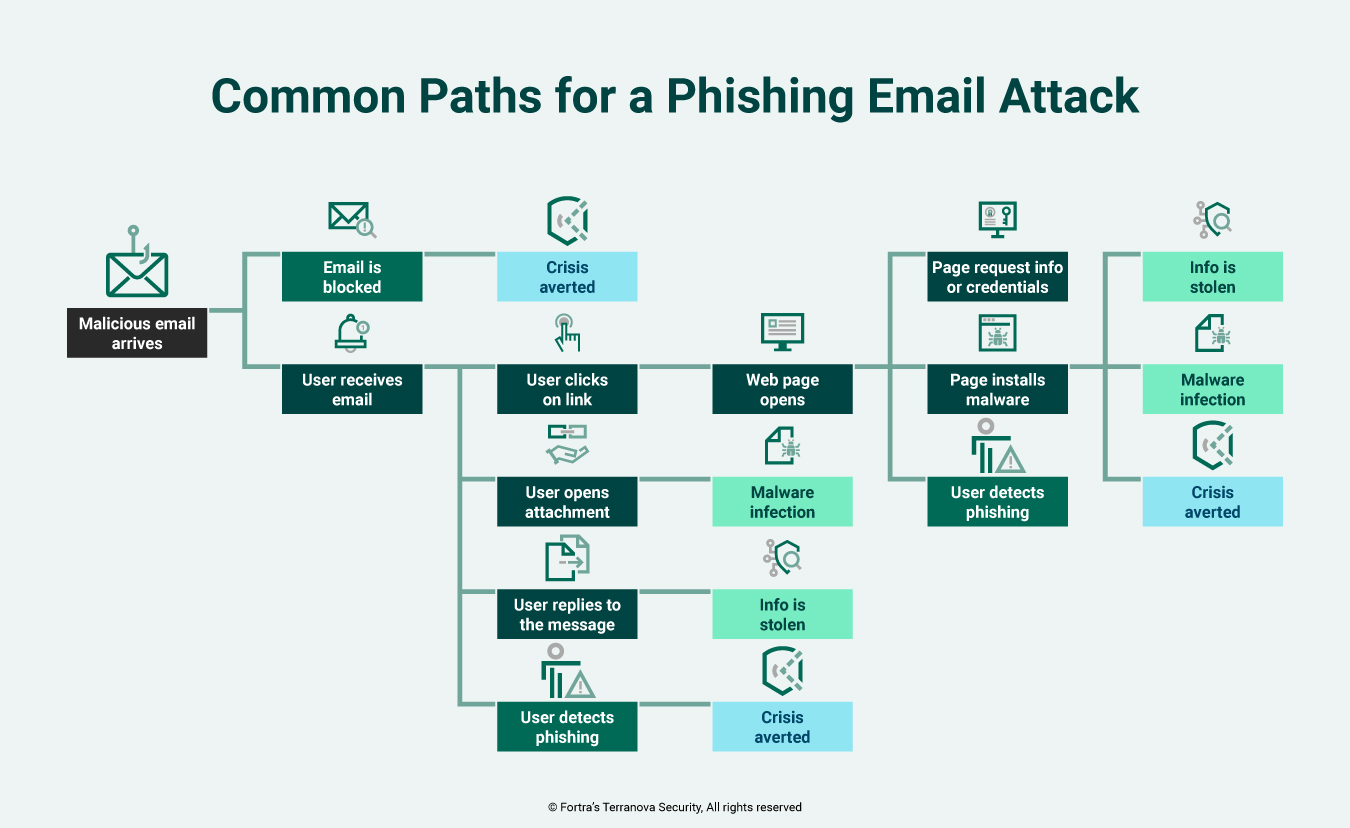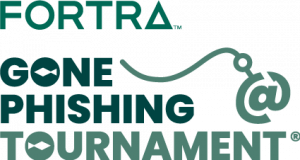The reality is simple. Phishing attacks are more prevalent than ever before.
An estimated 3.4 billion fraudulent emails are sent out daily as part of phishing schemes, resulting in the FBI's Internet Crime Complaint Center (IC3) receiving over 651,800 phishing-related complaints annually.
Adjusted losses for affected organizations topped $2.4 billion, costing them losses of up to $17,700 per minute.
Although it's cause for concern, these numbers aren't here to scare you. These numbers are merely to raise awareness and help you make informed decisions.  In the same vein, phishing awareness training exists to educate employees to recognize and report a phishing email. After all, a single click can make all the difference for your organization and its data.
In the same vein, phishing awareness training exists to educate employees to recognize and report a phishing email. After all, a single click can make all the difference for your organization and its data.
But you have your IT department; why do you need to implement phishing awareness training? Does it really exist to scare your users into compliance? Does it work?
This article answers all that and provides an in-depth look at phishing awareness training, its key components, and how you can easily launch these initiatives, regardless of your organization's industry, size, or region.
What is Phishing Awareness Training?
Phishing awareness training is a training campaign that educates end users on specific phishing threats they may encounter in their daily lives.
Effective phishing awareness training typically leverages byte-size modules where the user will learn about different phishing scenarios, appreciate the impact of the threat, and understand how to protect themselves and their company from falling victim to the threat actor. Engaging, gamified training components like phishing quizes and cyber games are critital to ensure that employees not only absorb information but also can apply it effectively when needed.
Phishing awareness training also involves a phishing simulation where they can evaluate and measure their knowledge, allowing them to spot warning signs and report phishing threats in a safe environment.
Why is phishing awareness training important?
Phishing threats are continuously evolving and becoming much more challenging for the average person to detect. Many well-known organizations are targeted by cyber criminals and must navigate the negative fallout of successful data breaches.
But what does that mean for your employees? Are they really at risk of being targeted by a cyber criminal?
A recent report says yes. Fortra's Terranova Security, in partnership with Ipsos, found that almost 76% of employees in France, the UK, Canada, Australia, and the US say a cyber attack has personally targeted them or that they know someone who has. Despite that, the same report revealed that 52% of the participants say their job has nothing to do with cyber security.
These staggering numbers become much less ideal once we consider the actual cost of a single data breach, which includes the cost of data, downtime, lost business due to reputational damage, idle employees, and regulatory fines.
The Pros and Cons of Phishing Awareness Training
Security awareness training will help you convert your employees into your first line of defense and build a strong security culture within your organization. This awareness helps make you more resilient to cyber attacks, creating a robust defense against threats.
- It's a great way to help your team spot phishing attacks, keeping everyone's data safer.
- Acts as a refresher on the company's cyber security policies and procedures.
- Encourages employee awareness of their roles in data security and breach response procedures.
- It ensures you're ticking all the boxes for stuff like GDPR, CCPA, HIPAA, and GLBA.
- Converts employees into the organization's first line of defense and cultivates a robust security culture.
Ultimately, it's all about building a solid security-focused culture in your company. But to reap these benefits, phishing awareness training needs to be done right. Training alone is not enough to prevent human error, and without the proper procedures and measures in place, you risk the following disadvantages:
- Employees risk becoming victims of sophisticated attacks if training doesn't sufficiently equip them to detect phishing threats.
- Cyber criminals often stay a step ahead of awareness training, which means you have to ensure that your training materials are up-to-date and incorporate real-life scenarios.
- If your training materials are not engaging or relevant for all employees, you risk low participation or attention, resulting in low retention and ineffective implementation.
- Organizing phishing awareness training presents an additional cost. However, this investment could save far more potential loss from a cyber attack, thus offering security and peace of mind.
Simulating phishing attacks on your workforce also allows you to assess your organization's maturity regarding its security awareness posture and optimize future iterations of campaign learning material and components.
Does Phishing Training Work?
The short answer is yes, when done right. But you don't have to take our word for it. A recent study showed that phishing training was the game-changer in reducing the risk of these attacks in 80% of companies.
With 88% of data breaches being caused by human error, the vital role of continuous employee security education on phishing threats is more prominent than ever.
To get optimal results, keep in mind that the goal is not to scare or instill fear in your employees. Instead, it's simply to educate and raise awareness. A product of successful security awareness training is a workforce that is more aware of the signs and risks of a single click on a malicious email.
Like other safety and awareness programs, phishing awareness programs should teach users to look at signs, protocols, and scenarios of how phishing can happen.
On top of that, remember to set strategic goals, objectives, KPIs & metrics based on your organization's needs and culture as this will affect your overall approach.
Phishing Awareness Training: 3 Phishing Simulation Essentials
Simulating phishing is an efficient way to test your employees' skills and measure their progress. A test provides data on which employees have been baited by the phishing email by clicking on the corresponding links. Your users can learn to identify suspicious emails and apply security awareness best practices by having the chance to experience a phishing attack.
80% of organizations say that phishing awareness training helped them reduce the risk of their employees falling for phishing attacks by 60%, yielding a 37-fold ROI. So, how do you run an effective simulation?
1. Get Buy-In From Your Internal Leaders
The first step to any good phishing simulation is getting approval from management. Notify and instruct a few people on handling calls from users who report the phishing message. Don't forget, a user's reaction once he detects a phishing message, actual or simulated, should always be the same: Alert someone or contact the IT Service Desk. During simulations, you may not want to notify users that it is a test and inform them that the IT department is handling it.
2. Craft an Actionable Phishing Simulation Strategy
Next comes planning. Create a plan not to send tests too frequently, as your employees will come to expect them, and don't send them too infrequently since you need to gather statistics, draw reports, and keep users sharp.
Don't send phishing emails to the entire company at once, as this might spark suspicion. Instead, send them to specific departments.
For example, to the invoicing department, imbue your email with an urgent tone so that your employees act with haste. Hackers commonly use this technique to get people to click on links or download attachments.
Start thinking like a cyber criminal. What is going to get your employees clicking? Subject lines that include the terms 'unpaid invoice,' 'free,' or 'exclusive offer' draw users' attention – greater the chances of falling prey to the attack.
3. Leverage Your Data-Driven Insights
Track email open rates, attachment downloads, information disclosure, and clickthrough rates during your phishing simulation campaign. Draw reports on the number of users who have fallen for the phishing attack and how many employees have reported the incident.
This phishing simulation data is essential to growing and optimizing your training program. It will give your leadership insight into the effectiveness of behavior change initiatives and take them to the next level. Your organization can use this intel to fine-tune its long-term strategy to align with larger business goals.
Raise Your Defenses Against Phishing Attacks
“Implementing the right security awareness training program is vital. Using scare tactics is never constructive and will only create doubtful employees unwilling to help others. However, building a cyber aware culture within your organization will lead to having a strong first line of defense. No matter what type of phishing or social engineering attack they witness, proper education ensures that your users can recognize the signs, report it, and stop the threat early on.” - Christian Orfali, Information Security Advisor, Fortra's Terranova Security
Remember, successful phishing awareness training needs to be backed by a phishing simulation strategy aimed at determining your resilience against phishing attacks. And to support your initiative, get advice from your internal leaders and use data-driven insights to shape your defense against breaches.

See how your organization’s phishing knowledge compares to others in your industry and region.
Get the latest Gone Phishing Tournament results.
Free Security Awareness Training Kit
Take the guesswork out of security awareness training. This kit will guide you through each step of implementing an effective training program.
